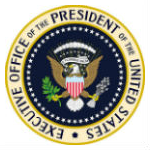 A presidential advisory council report released Friday recommends the creation of a wireless network in a test city to support “rapid experimentation in spectrum management technology and practice.” A key focus of the envisioned experimentation would be to explore the possibility of sharing spectrum currently in government hands with commercial users – an idea we have been hearing quite frequently from government officials over the last few months.
A presidential advisory council report released Friday recommends the creation of a wireless network in a test city to support “rapid experimentation in spectrum management technology and practice.” A key focus of the envisioned experimentation would be to explore the possibility of sharing spectrum currently in government hands with commercial users – an idea we have been hearing quite frequently from government officials over the last few months.
“Clearing and reallocation of federal spectrum is not a sustainable basis for spectrum policy due to the high cost, lengthy time to implement and disruption to the federal mission,” wrote the President’s Council of Advisors on Science and Technology in the report released Friday.
In the report, titled “Realizing the Full Potential of Government-Held Spectrum to Spur Economic Growth,” PCAST estimates the cost of constructing and operating the test city network at $60 million for the first three years and recommends obtaining the funds from the Wireless Innovation Fund at the National Institute of Standards and Technology, which initially received an initial infusion of $100 million as part of this year’s payroll tax agreement. Over time, however, PCAST suggests that the costs for running the test city should be transferred to a public private partnership.
To encourage the various government agencies that currently control spectrum to share it, the council recommends the implementation of what it calls “synthetic currency,” which would be allocated to individual agencies and which the agencies could use to “buy” their spectrum usage rights. The Office of Management and Budget would administer this system, which would establish valuations based on comparable private sector uses.
“Reducing their use of synthetic spectrum currency would reward early adopters of improved spectrum effectiveness with a trade for real dollars from [a] spectrum efficiency fund,” wrote PCAST. The spectrum efficiency fund would be created by broadening and repurposing the spectrum relocation fund established by Congress in 2004.
The PCAST report also recommends that President Obama issue a memorandum highlighting the importance of making underutilized federal spectrum available for commercial use and requiring the Secretary of Commerce to immediately identify 1,000 MHz of federal spectrum that could be shared with commercial users.
Other recommendations of the PCAST report include:
- Immediate sharing of new low-power civil devices in two existing federal bands of more than 100 MHz combined. Based on the report’s executive summary, these bands appear to be in the 3550-3650 MHz radar band.
- The creation of a Spectrum Sharing Partnership Steering Committee to recommend a policy framework for spectrum sharing over a one-year time period. Committee members would be industry executives selected by President Obama.
Government officials seeking to implement spectrum sharing will have to work hard to persuade wireless operators that the concept is an attractive alternative to cleared spectrum, however. Wireless association CTIA wasted no time in issuing a statement that praised PCAST for highlighting the need for more commercial spectrum, but also emphasized the advantages of spectrum clearing.
“The gold standard for deployment of ubiquitous mobile broadband networks remains cleared spectrum,” said CTIA Vice President of Regulatory Affairs Chris Guttman-McCabe in the statement. “Cleared spectrum and an exclusive-use approach has enabled the U.S. wireless industry to invest hundreds of billions of dollars, deploying world-leading mobile broadband networks and resulting in tremendous economic benefits for U.S. consumers and businesses.”


